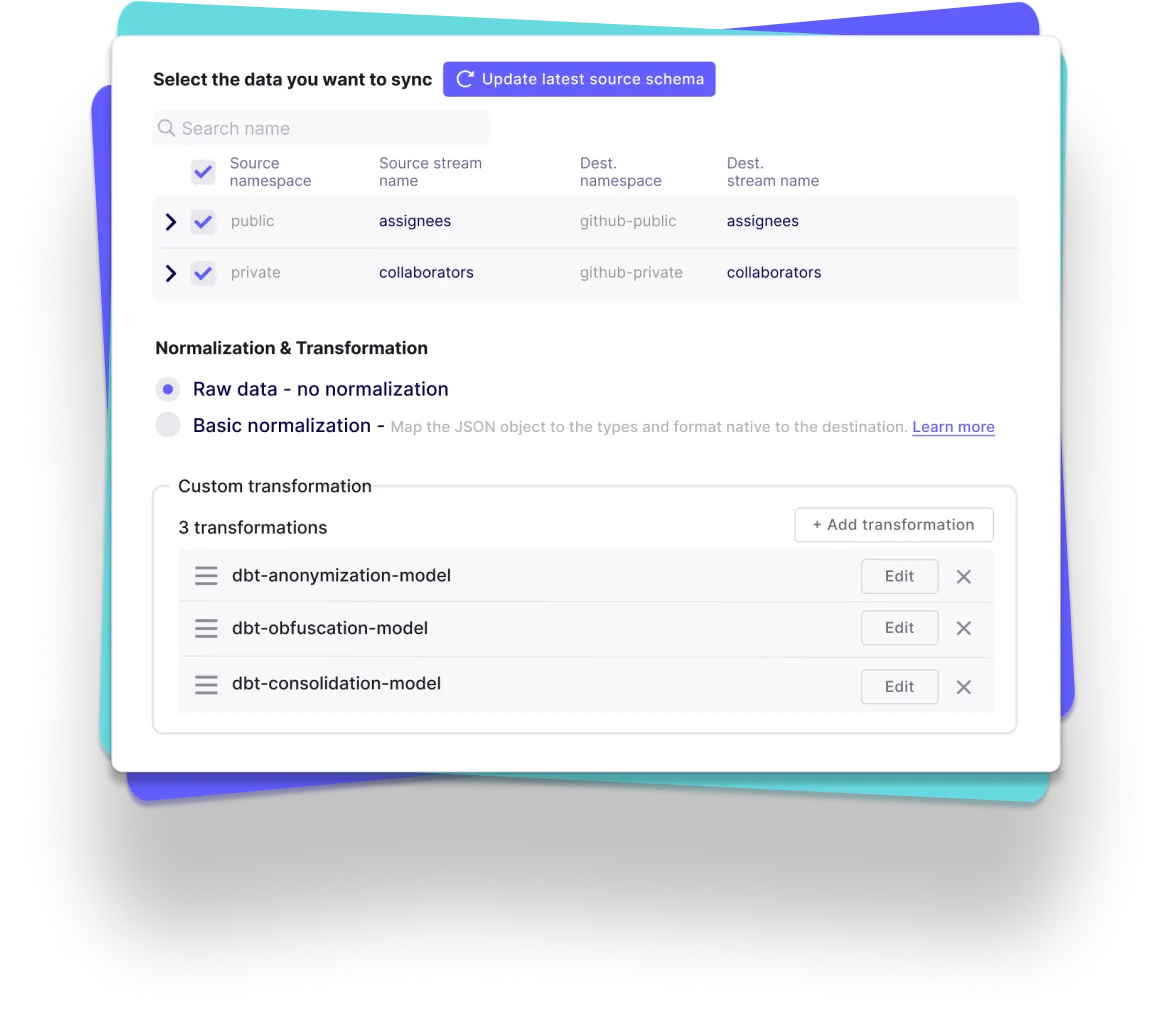
Top companies trust Airbyte to centralize their Data






.png)


Sync your Data
Ship more quickly with the only solution that fits ALL your needs.
As your tools and edge cases grow, you deserve an extensible and open ELT solution that eliminates the time you spend on building and maintaining data pipelines
Leverage the largest catalog of connectors

Cover your custom needs with our extensibility

Free your time from maintaining connectors, with automation
- Automated schema change handling, data normalization and more
- Automated data transformation orchestration with our dbt integration
- Automated workflow with our Airflow, Dagster and Prefect integration
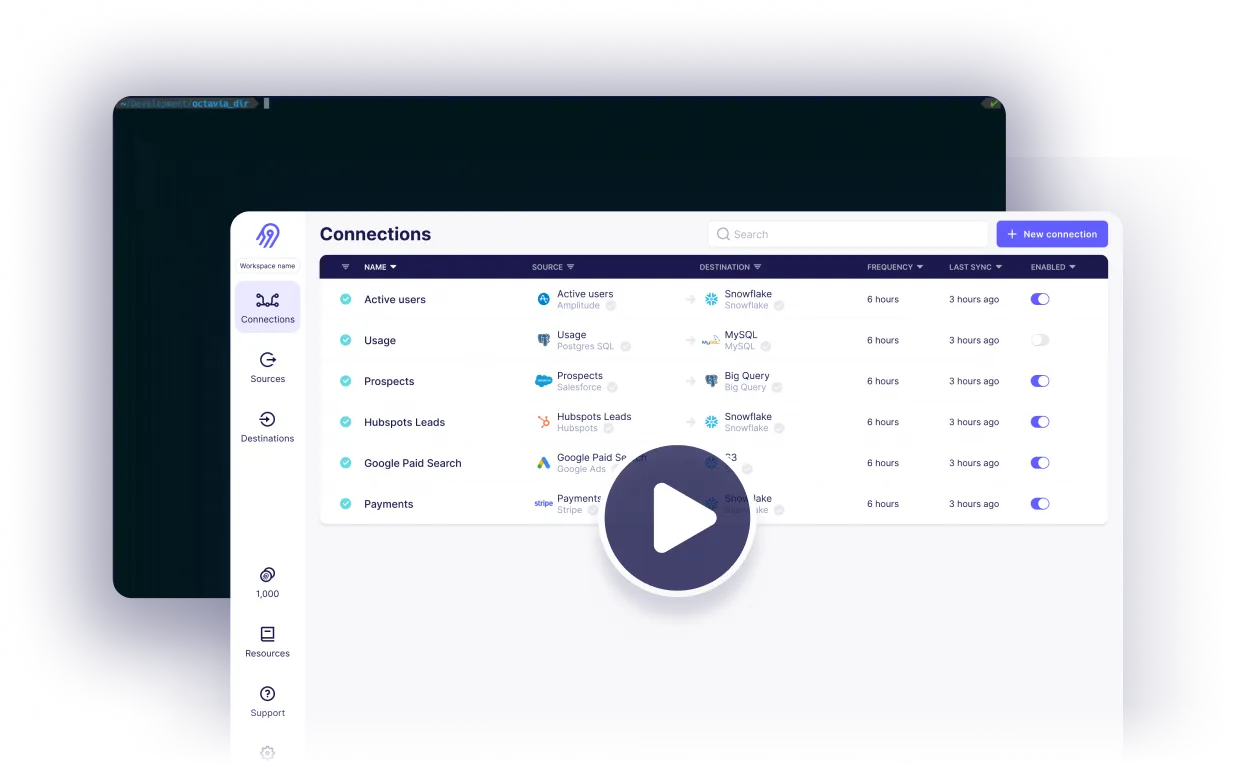
Reliability at every level
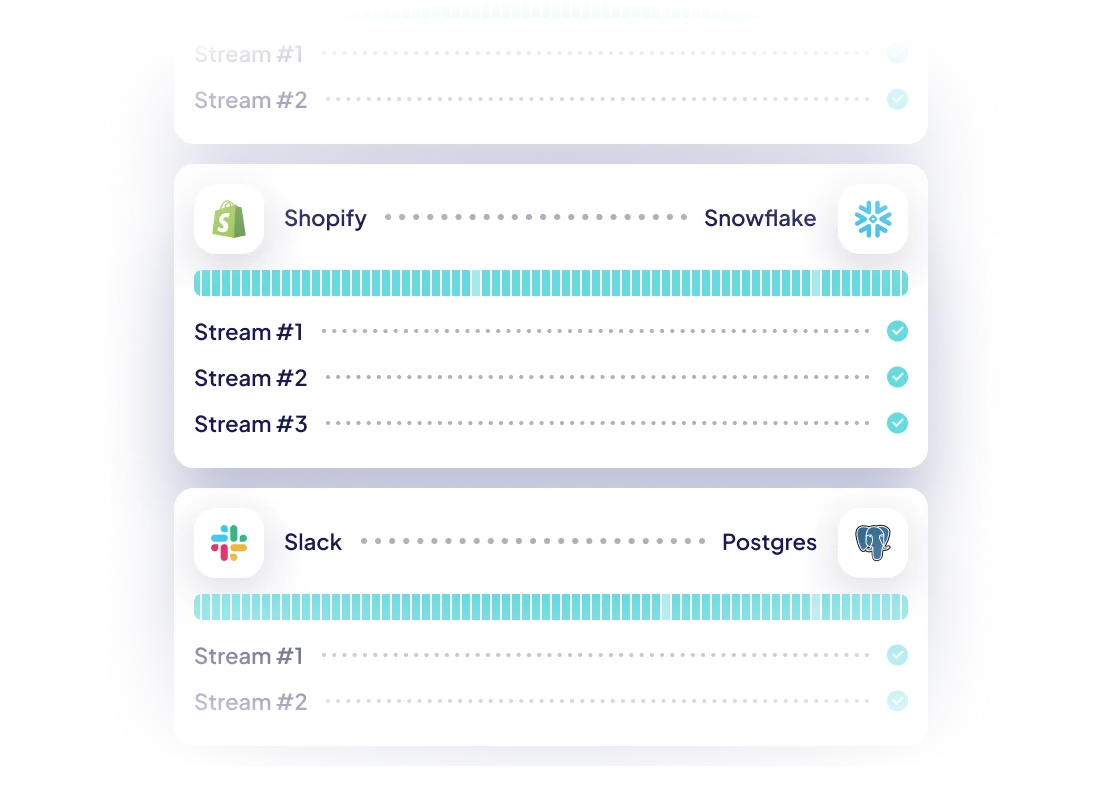


Airbyte Open Source
Airbyte Cloud
Airbyte Enterprise

Why choose Airbyte as the backbone of your data infrastructure?
Keep your data engineering costs in check
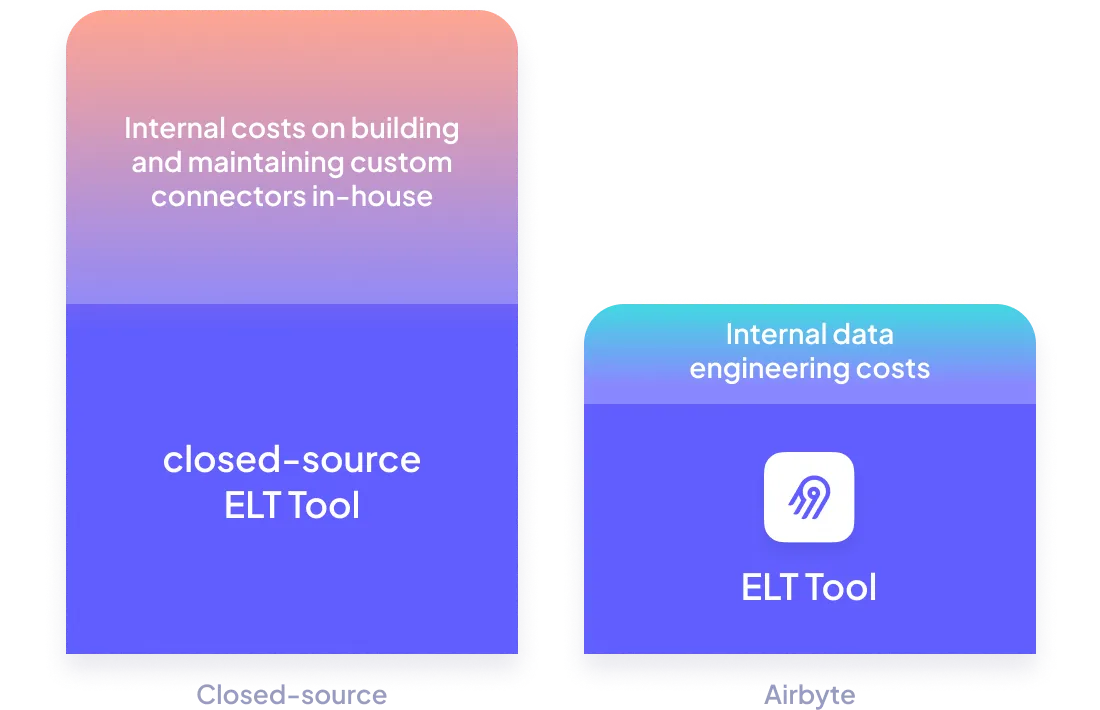
Get Airbyte hosted where you need it to be
- Airbyte Cloud: Have it hosted by us, with all the security you need (SOC2, ISO, GDPR, HIPAA Conduit).
- Airbyte Enterprise: Have it hosted within your own infrastructure, so your data and secrets never leave it.
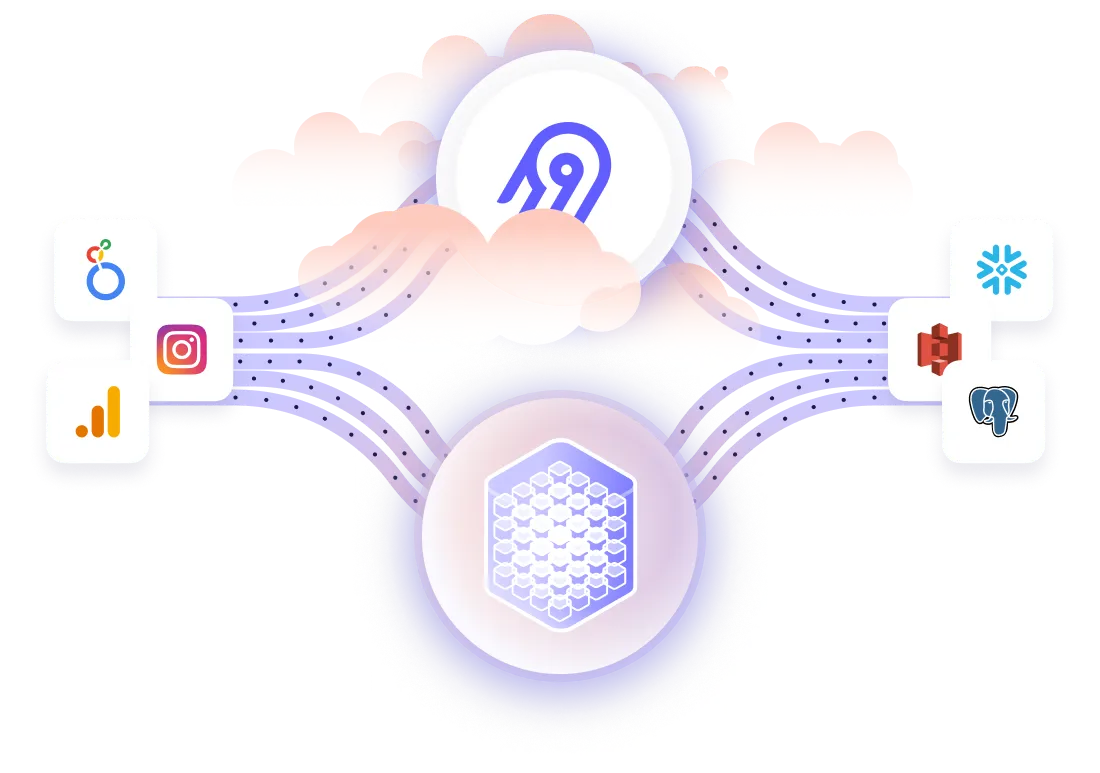
White-glove enterprise-level support
Including for your Airbyte Open Source instance with our premium support.
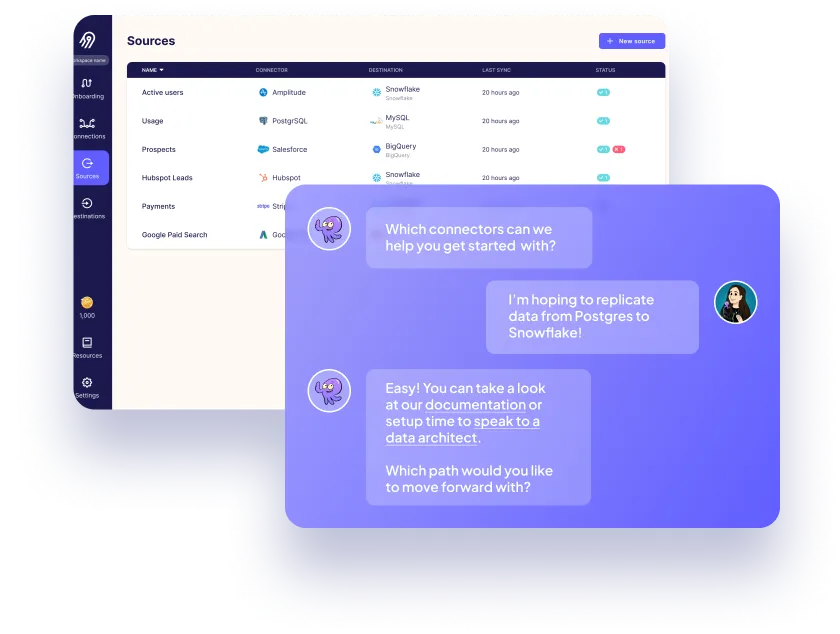

Fnatic, based out of London, is the world's leading esports organization, with a winning legacy of 16 years and counting in over 28 different titles, generating over 13m USD in prize money. Fnatic has an engaged follower base of 14m across their social media platforms and hundreds of millions of people watch their teams compete in League of Legends, CS:GO, Dota 2, Rainbow Six Siege, and many more titles every year.
Ready to get started?
FAQs
What is ETL?
ETL, an acronym for Extract, Transform, Load, is a vital data integration process. It involves extracting data from diverse sources, transforming it into a usable format, and loading it into a database, data warehouse or data lake. This process enables meaningful data analysis, enhancing business intelligence.
Reply.io is a sales engagement platform that assists automate and scale. Reply.io personalizes your sequences at scale and creates opportunities faster. Reply.io is a multichannel sales engagement platform that automates email search, LinkedIn outreach, personal emails, SMS and WhatsApp messages, and calls. Integrating Reply.io with other systems via Pipedrive is an easy and fast way to automate your work. Reply.io shares its secrets to supercharging your account-based marketing using LinkedIn.
CSV (Comma Separated Values) file is a tool used to store and exchange data in a simple and structured format. It is a plain text file that contains data separated by commas, where each line represents a record and each field is separated by a comma. CSV files are widely used in data analysis, data migration, and data exchange between different software applications. The CSV file format is easy to read and write, making it a popular choice for storing and exchanging data. It can be opened and edited using any text editor or spreadsheet software, such as Microsoft Excel or Google Sheets. CSV files can also be imported and exported from databases, making it a convenient tool for data management. CSV files are commonly used for storing large amounts of data, such as customer information, product catalogs, financial data, and scientific data. They are also used for data analysis and visualization, as they can be easily imported into statistical software and other data analysis tools. Overall, the CSV file is a simple and versatile tool that is widely used for storing, exchanging, and analyzing data.
Reply.io's API provides access to various types of data related to email marketing and sales automation. The categories of data that can be accessed through the API are:
1. Contacts: This includes information about the contacts in the user's Reply.io account, such as their name, email address, phone number, and company.
2. Campaigns: This includes data related to the user's email campaigns, such as the campaign name, status, and metrics like open rates, click-through rates, and reply rates.
3. Templates: This includes data related to the email templates used in the user's campaigns, such as the template name, content, and design.
4. Tasks: This includes data related to the tasks assigned to the user or their team members, such as the task name, due date, and status.
5. Analytics: This includes data related to the user's email marketing and sales automation performance, such as the number of emails sent, opened, clicked, and replied to.
6. Integrations: This includes data related to the user's integrations with other tools and platforms, such as their CRM, marketing automation software, and social media accounts.
What is ELT?
ELT, standing for Extract, Load, Transform, is a modern take on the traditional ETL data integration process. In ELT, data is first extracted from various sources, loaded directly into a data warehouse, and then transformed. This approach enhances data processing speed, analytical flexibility and autonomy.
Difference between ETL and ELT?
ETL and ELT are critical data integration strategies with key differences. ETL (Extract, Transform, Load) transforms data before loading, ideal for structured data. In contrast, ELT (Extract, Load, Transform) loads data before transformation, perfect for processing large, diverse data sets in modern data warehouses. ELT is becoming the new standard as it offers a lot more flexibility and autonomy to data analysts.








